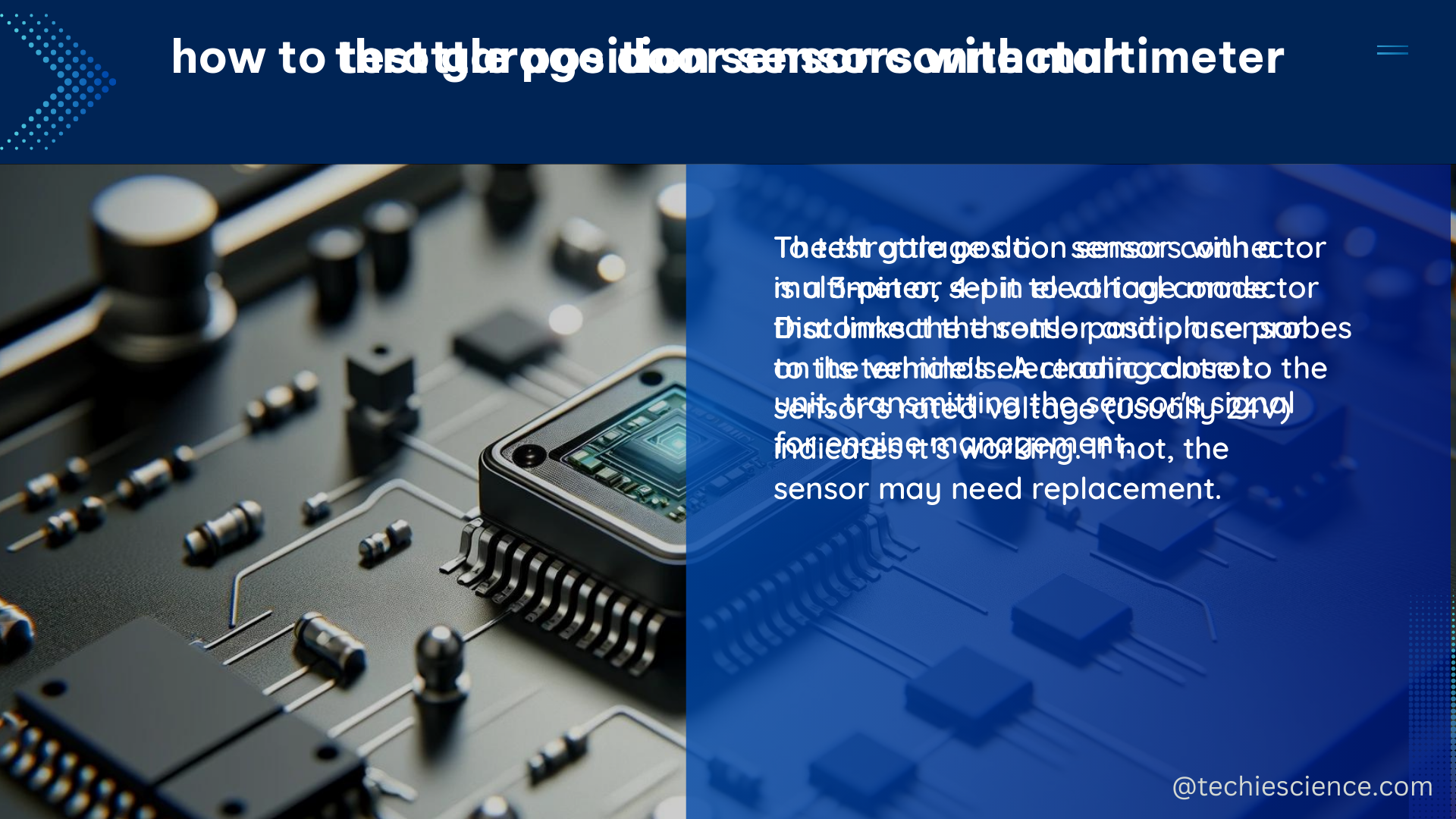The throttle position sensor (TPS) connector is a critical component in modern automotive engines, responsible for transmitting crucial throttle position data to the engine control unit (ECU). This data is essential for regulating fuel injection, ignition timing, and other critical engine functions, ensuring optimal engine performance and efficiency.
Understanding the TPS Connector
Connector Type
The TPS connector is typically a plastic housing with metal contacts that connect to the TPS. The connector’s specific type and part number can vary depending on the vehicle make and model. Common connector types include the Deutsch DT, Delphi, and Molex connectors, each with their unique design and pin configurations.
Pin Configuration
The TPS connector has a specific pin configuration that corresponds to the TPS wiring harness. This configuration includes power, ground, and signal wires, each with a unique pin location. The pin assignments can vary across different vehicle models, so it’s essential to refer to the manufacturer’s wiring diagrams or service manuals to ensure proper connection.
| Pin | Function |
|---|---|
| 1 | Power (typically 5V) |
| 2 | Ground |
| 3 | Signal |
Resistance
The resistance of the TPS signal wire can be measured using an ohmmeter. A typical TPS signal wire has a resistance of around 5,000 ohms, although this can vary depending on the vehicle’s specific TPS design. A resistance reading outside the expected range may indicate a problem with the TPS or its wiring.
Voltage
The voltage of the TPS signal wire can be measured using a multimeter. A healthy TPS signal wire should have a voltage range of 0-5 volts, depending on the throttle position. The voltage should increase as the throttle is opened and decrease as the throttle is closed. Abnormal voltage readings may indicate a problem with the TPS or the ECU’s input signal.
Current
The current flowing through the TPS connector can be measured in amperes using a clamp meter. A typical TPS connector has a current rating of 1-2 amps, although this can vary depending on the vehicle’s specific TPS design. Excessive current draw or fluctuations in current may indicate a problem with the TPS or its wiring.
Testing the TPS Connector

Wiring Test Using a Resistor
To test the TPS connector’s wiring using a resistor, follow these steps:
- Disconnect the TPS connector from the wiring harness.
- Connect a 5,000-ohm resistor between the signal and reference (ground) wires of the TPS connector.
- Observe the voltage on a scan tool or multimeter. The voltage should be around 2.5 volts, indicating a properly functioning TPS circuit.
- If the voltage is outside the expected range, it may indicate an issue with the TPS wiring or the ECU’s input signal.
Multimeter and OBD II Scanner Tests
For a visual guide on testing a TPS using a multimeter or OBD II scanner, refer to the following resources:
- Throttle Position Sensor (TPS) Testing
- How to Test a Throttle Position Sensor (TPS) with a Multimeter
These videos demonstrate how to measure the resistance and voltage of the TPS signal wire, as well as how to interpret the scan tool data to diagnose any issues with the TPS or its wiring.
Conclusion
The TPS connector is a critical component in modern automotive engines, responsible for transmitting crucial throttle position data to the ECU. Understanding the connector’s type, pin configuration, resistance, voltage, and current characteristics is essential for properly diagnosing and troubleshooting any issues related to the TPS.
By following the testing procedures outlined in this guide, you can effectively identify and address any problems with the TPS connector, ensuring optimal engine performance and efficiency.
References
- OBD PID Explanations
- Sealed My Throttle Position Sensor Connector
- Throttle Position Sensor (TPS) Testing
- How to Test a Throttle Position Sensor (TPS) with a Multimeter

The lambdageeks.com Core SME Team is a group of experienced subject matter experts from diverse scientific and technical fields including Physics, Chemistry, Technology,Electronics & Electrical Engineering, Automotive, Mechanical Engineering. Our team collaborates to create high-quality, well-researched articles on a wide range of science and technology topics for the lambdageeks.com website.
All Our Senior SME are having more than 7 Years of experience in the respective fields . They are either Working Industry Professionals or assocaited With different Universities. Refer Our Authors Page to get to know About our Core SMEs.